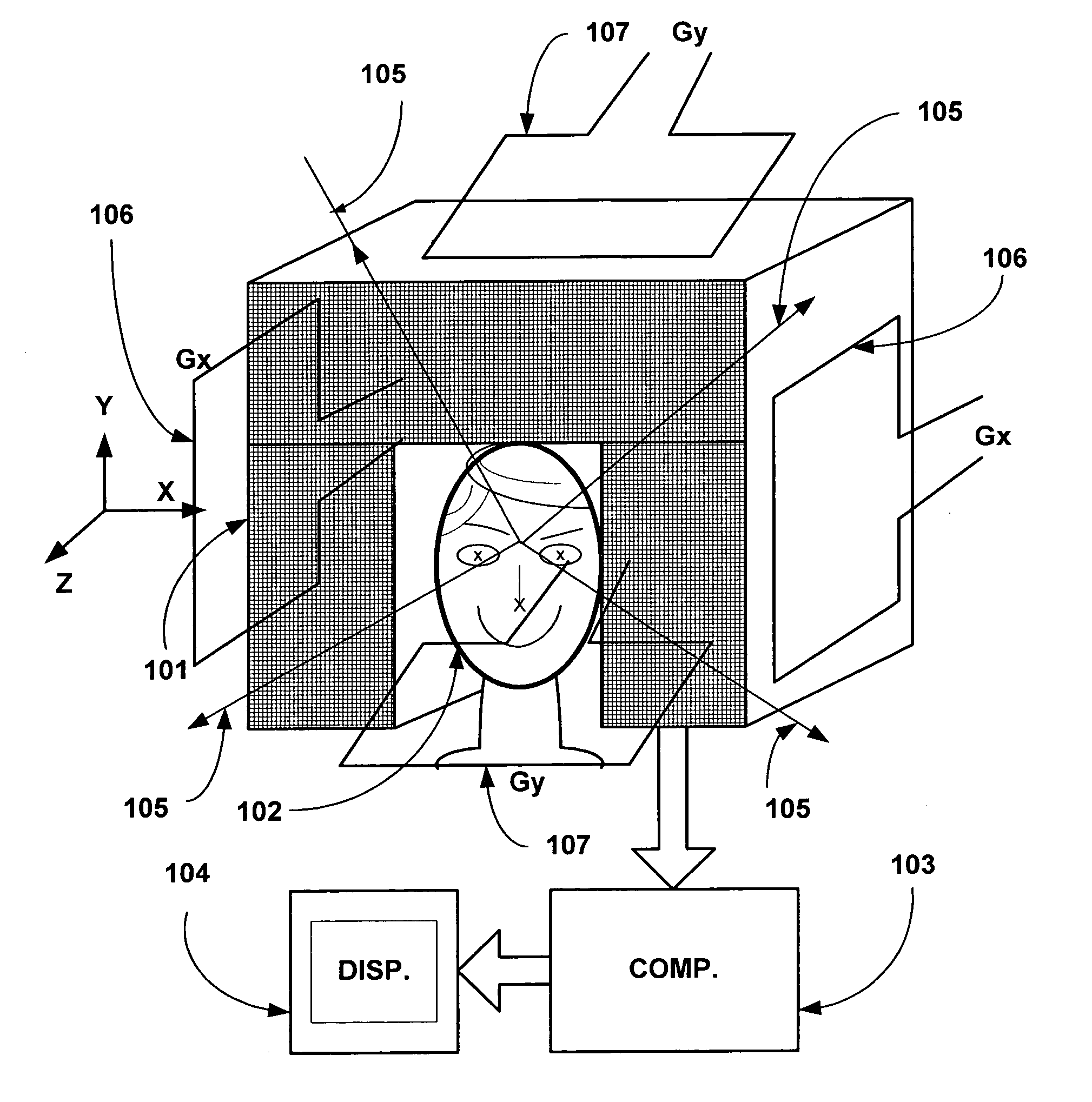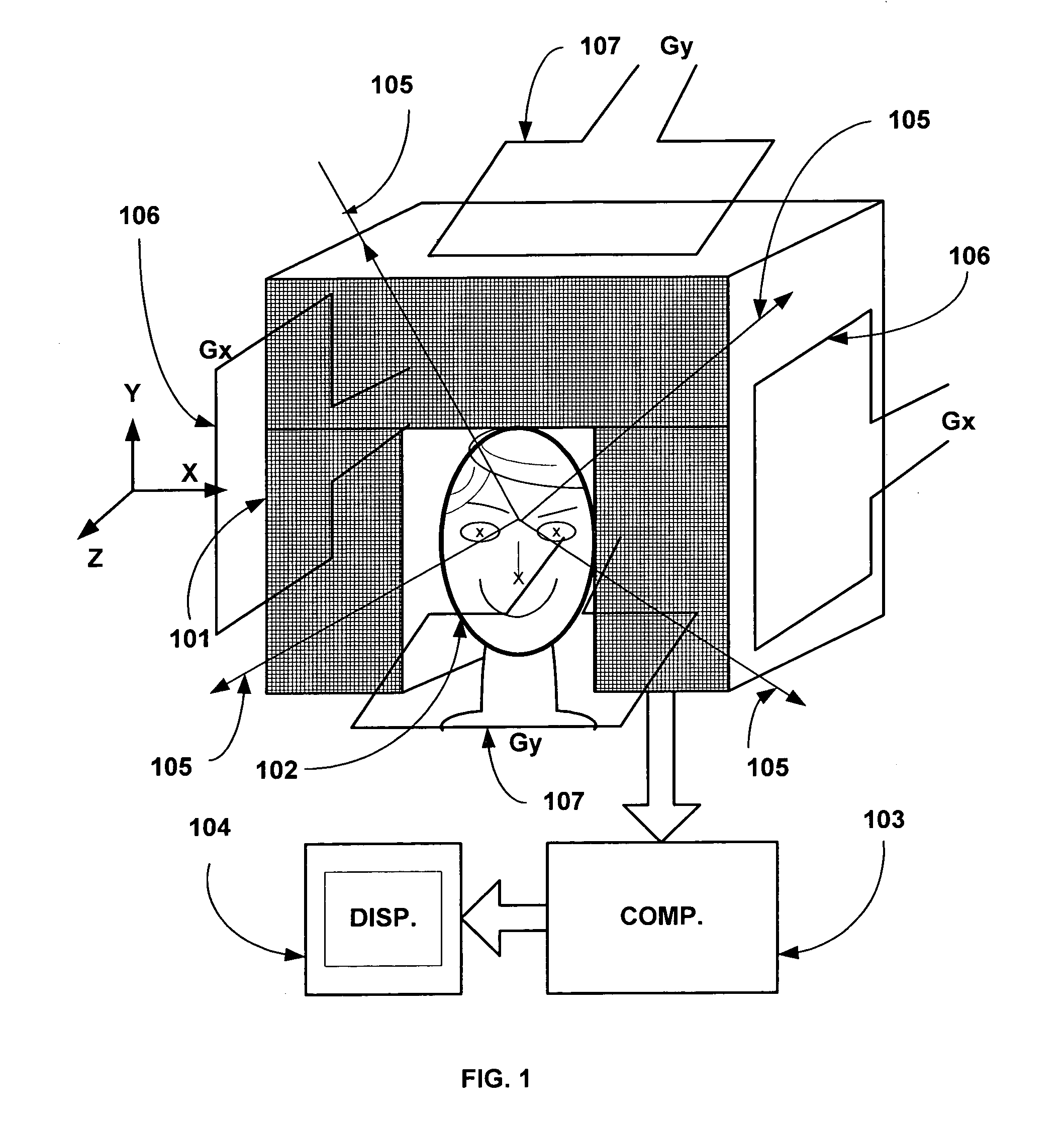Methods and apparatuses for 3D magnetic density imaging and magnetic resonance imaging
a technology of applied in the field of methods and apparatuses for 3d magnetic density imaging and magnetic resonance imaging, can solve the problems of slow scanning time, inefficient information usage, and high magnetic field, and achieve the effects of reducing or completely avoiding the dependence on frequency encoding, fast scanning time, and low cos
- Summary
- Abstract
- Description
- Claims
- Application Information
AI Technical Summary
Benefits of technology
Problems solved by technology
Method used
Image
Examples
Embodiment Construction
[0051]This invention discloses novel methods and apparatuses for 3D imaging of any magnetizable object such as soft-tissue. A detailed description of the methods and apparatuses are presented in this section.
[0052]The present invention is based on a new theory not found in prior art. It is based on the Field Paradigm. Therefore, the theoretical basis of the present invention is presented with concrete mathematical derivations for 3D imaging in MDI and MRI.
[0053]Magnetic Density Imaging (MDI) is a novel imaging technique related to Magnetic Resonance Imaging (MRI) but without necessarily exploiting magnetic resonance characteristics of objects. MDI provides images of objects similar to those provided by MRI in prior art. An object to be imaged by MDI is first subjected to a known polarizing magnetic field at each point for a short time duration of the order of around 0.00001 to 100.0 second (comparable to the T1 relaxation time of the target object). This causes the small volume elem...
PUM
 Login to View More
Login to View More Abstract
Description
Claims
Application Information
 Login to View More
Login to View More - R&D
- Intellectual Property
- Life Sciences
- Materials
- Tech Scout
- Unparalleled Data Quality
- Higher Quality Content
- 60% Fewer Hallucinations
Browse by: Latest US Patents, China's latest patents, Technical Efficacy Thesaurus, Application Domain, Technology Topic, Popular Technical Reports.
© 2025 PatSnap. All rights reserved.Legal|Privacy policy|Modern Slavery Act Transparency Statement|Sitemap|About US| Contact US: help@patsnap.com



